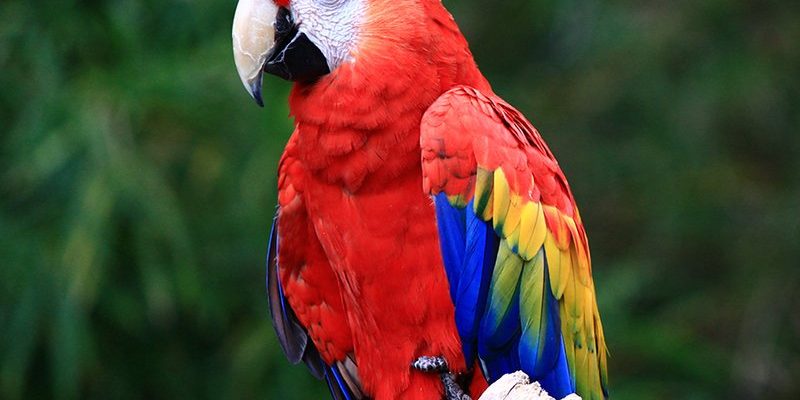
The scarlet macaw, native to Central and South America, faces several challenges that put its survival at risk. From habitat destruction to illegal trapping, various factors are creating a squeeze on their populations. It’s like watching a beautiful painting slowly fade away—the colors may still be there, but the canvas is getting harder to see. So, let’s dig deeper into what’s happening with these stunning birds and what it means for their existence.
What Is the Current Status of the Scarlet Macaw?
To understand whether the scarlet macaw is threatened or endangered, we should first look at its conservation status. According to the International Union for Conservation of Nature (IUCN), the scarlet macaw is currently listed as Least Concern, but that doesn’t tell the entire story. The classification reflects a wide distribution across its home range, yet the population is decreasing in many areas.
In some regions, numbers are declining sharply. For instance, in parts of Mexico and Central America, increased deforestation and illegal trapping for the pet trade are significant issues. In these places, the typical sight of a flock of scarlet macaws flying overhead is becoming rare. It’s like losing a piece of music you once loved, leaving behind a silence where the joyful chirps used to be.
What Threats Do Scarlet Macaws Face?
Scarlet macaws face several threats that contribute to their declining numbers. Here are some of the biggest challenges:
- Deforestation: As rainforests are cut down for agriculture and urban development, macaws lose their homes. Without the trees they rely on for food and nesting, their chances of survival diminish.
- Illegal Trapping: Sadly, people often capture these birds to sell as pets. In many cases, this is done inhumane ways that harm both the birds and their populations.
- Climate Change: Shifts in climate can alter their habitat, affecting the availability of food and places to nest. This uncertainty can be incredibly stressful for their survival.
These threats are like dominoes falling in a chain reaction. When one aspect of their environment changes, it often leads to another problem, making recovery increasingly difficult for the scarlet macaw.
How Does Habitat Loss Affect Scarlet Macaws?
Habitat loss is one of the most significant factors putting the scarlet macaw at risk. Imagine living in a beautiful house filled with your favorite things, only to have someone start tearing it down piece by piece. That’s what it feels like for these birds as their homes are destroyed.
When trees are cut down, scarlet macaws lose access to essential resources:
– Food: Scarlet macaws primarily eat fruits, nuts, and seeds. With fewer trees, their food sources dwindle, leading to malnutrition or starvation.
– Nesting Sites: These birds need large tree cavities to nest. Deforestation reduces available nesting sites, which can limit breeding success.
– Social Structure: Scarlet macaws are social creatures. They rely on flocking behavior to find food and protect themselves from predators. If their habitat shrinks, their social structures can become disrupted.
Without a safe and abundant home, the future of the scarlet macaw hangs in the balance.
Conservation Efforts for Scarlet Macaws
Fortunately, conservation efforts are in place to help protect scarlet macaw populations. Various organizations and governments are working together to address the challenges these birds face. Here are a few key initiatives:
1. Protected Areas: Establishing national parks and wildlife reserves helps safeguard the natural habitat of the scarlet macaw. These areas are like safe havens where these birds can thrive without the threat of deforestation.
2. Anti-Poaching Campaigns: Efforts to combat illegal trapping are crucial. Organizations focus on raising awareness about the consequences of illegal pet trade and working with local communities to promote alternative livelihoods.
3. Rehabilitation Programs: Some groups are dedicated to rehabilitating injured or orphaned macaws. Once healed, they’re often released back into their natural habitats, contributing to population sustainability.
By bringing awareness to their plight, these efforts foster hope for a brighter future for the scarlet macaw.
What Can You Do to Help Scarlet Macaws?
You might be wondering how you can contribute to the conservation of scarlet macaws. Here are some simple actions anyone can take to make a difference:
– Support Conservation Groups: Donating to organizations that focus on wildlife conservation can help fund their crucial work.
– Spread Awareness: Talk about the challenges facing scarlet macaws with friends and family. The more people know, the more they can help.
– Be a Responsible Pet Owner: If you’re considering pet ownership, research the species thoroughly. Avoid buying pets that are taken from the wild.
– Sustainable Choices: Support products that come from sustainable sources. By choosing environmentally-friendly options, you contribute to the protection of habitats where these birds live.
Just like planting a seed can eventually grow into a mighty tree, every small action can lead to significant changes in the conservation efforts for the scarlet macaw.
In summary, while the scarlet macaw isn’t currently classified as endangered, its situation is delicate. The threats of habitat loss, illegal trapping, and climate change pose significant challenges that lead to population declines. However, through dedicated conservation efforts and individual contributions, there’s still hope for this magnificent bird.
By understanding the challenges and participating in their protection, we can help ensure that future generations will witness the remarkable sight of scarlet macaws soaring through the rainforest canopy. So, let’s keep our eyes on the skies and work together to protect these colorful treasures of nature.

